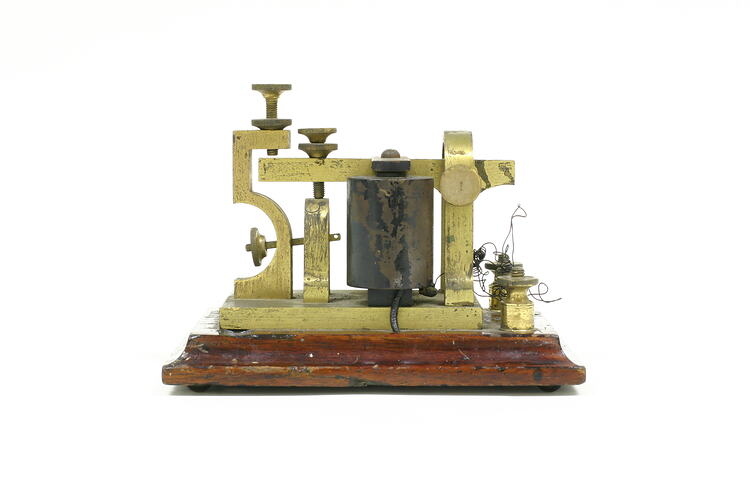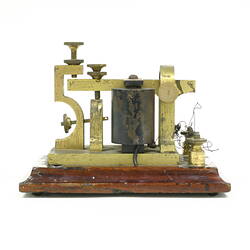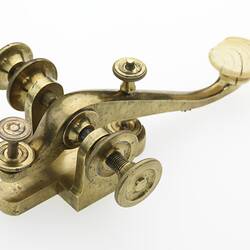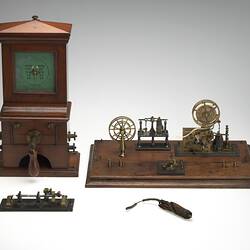Summary
Telegraph sounder used for the reception of telegraph messages transmitted by Morse code.
Telegraph signals were transmitted by an operator who depressd a key to complete an electric circuit and transmit current along the telegraph line. Releasing the key broke the circuit and cut off the current. Letters and numbers were represented by a sequence of short current pulses ('dots') and long current pulses ('dashes'), transmitted according to a defined code. The most widely used code was generally known as "Morse code".
At the receiving end of the telegraph line, the incoming current pulses passed to the receiving instrument, or 'sounder'. Two vertical wire coils were energised by the received pulses, causing the metal arm across the top of the coils to move up and down. The movement of the arm could be heard as a succession of metallic clicks. The interval between the clicks was short in response to the short current pulse representing a 'dot', or long in response to the long current pulse representing 'dash'. A skilled operator could interpret the succession of clicks as a pattern of dots and dashes and immediately decode the letters and numbers in the received message.
Physical Description
Two vertical wire coils and brass components on brass baseplate. Base plate and brass terminals mounted on varnished wooden base. Length of fine connecting wire.
More Information
-
Collection Names
-
Collecting Areas
-
Inscriptions
Inscribed on wooden baseplate: 388" Inscribed on wooden base: 388 / 20 OH" / 968 / [illeg.]
-
Classification
-
Category
-
Discipline
-
Type of item
-
Overall Dimensions
98 mm (Width), 140 mm (Depth), 110 mm (Height)
-
Keywords




